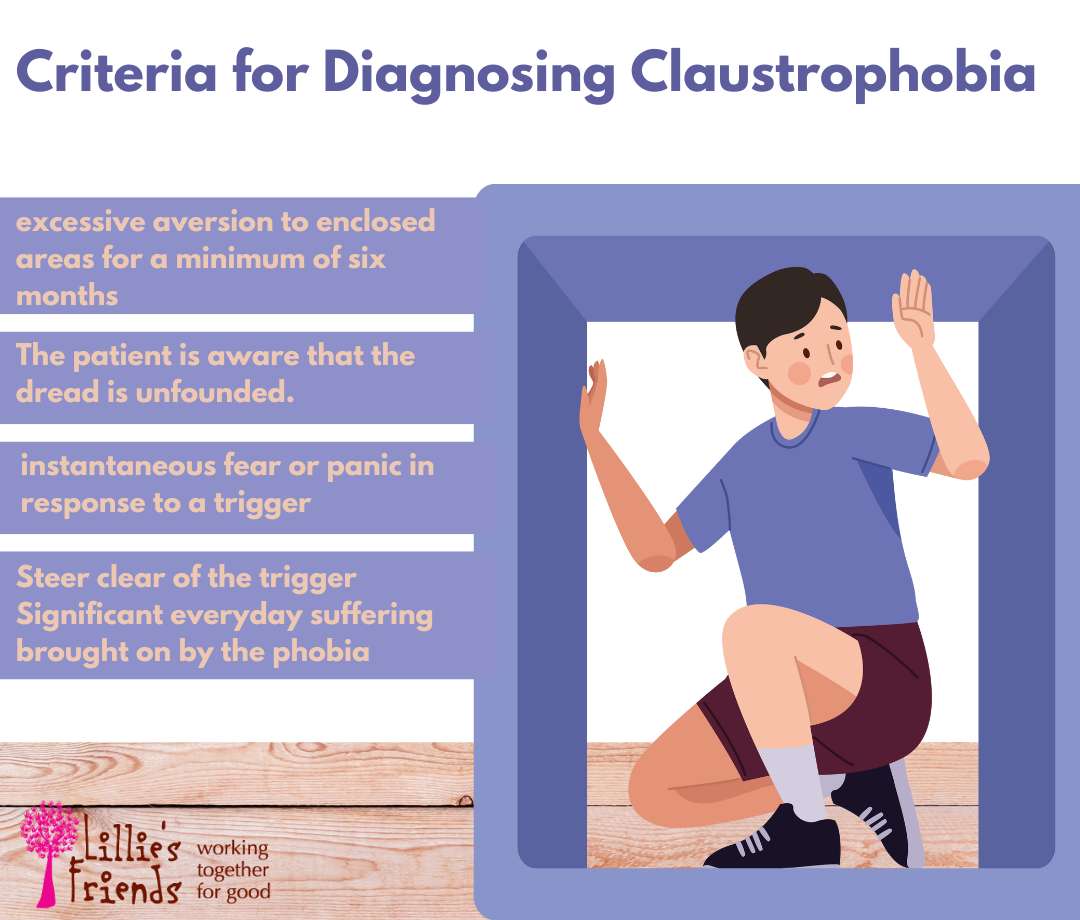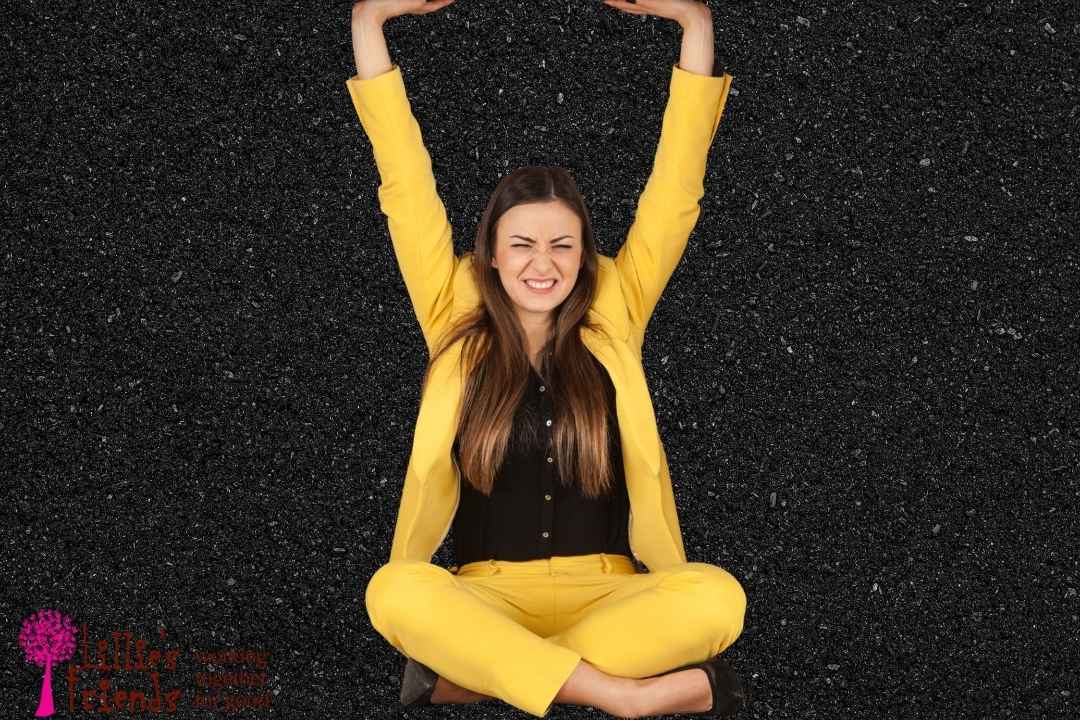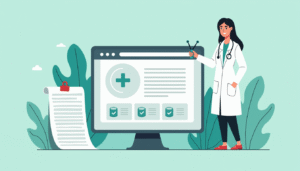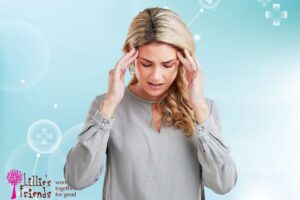About 12.5%↗ of people experience claustrophobia in one way or another; this condition is especially prevalent in women. You may have this anxiety condition if you have ever had extreme anxiety or terror in a crowded area, windowless room, elevator, tunnel, tube train, or MRI machine. But don’t worry—there are several therapies that can help you get over your fear of crowded or small environments.
We’ll go over the key characteristics of claustrophobia in this piece, along with its causes, diagnostic standards, and available treatments.
Claustrophobia: Definition
An extreme and illogical fear of cramped areas is known as claustrophobia. The fear is irrational, as the individual who has it will become anxious even in situations when there isn’t any actual risk, like using an elevator.
Many individuals with this disease stay away from places and enclosed areas that make them anxious, such as public restrooms, subway stations, and car washes. For instance, even when elevators are available, you can choose to use the stairs to ascend several stories. Other cramped areas that might make you anxious include:
- Change rooms in stores
- Aircraft
- Revolving doors
- Automobiles
- Congested roads
- Basements and cellars
- Tiny, secured rooms
Some people only feel extremely anxious in specific restricted locations, such as the MRI machine, whereas others report experiencing claustrophobic feelings in various limited spaces.
You may need therapy to deal with your fear of confined places, or your claustrophobia may go away on its own. Despite the severity of claustrophobic symptoms, many people choose not to seek therapy.
Signs of Claustrophobia
Each person experiences claustrophobia in a different way. While some people suffer severe panic episodes in confined places, others just have minor uneasiness. Typical physical signs and symptoms include:
- Shivering
- Sweating
- Quick heartbeat
- Lightheadedness
- Dry mouth
- Perplexity
- Chills or hot flashes
- The feeling of butterflies in the abdomen
- A ringing sound in the ears
- Headache
- The feeling of choking
- A lack of mobility
- queasy
- The urge to use the restroom
Additionally, being in a confined area might cause psychological problems such as:
- The fear of being confined
- A fear of passing away
- A sense of foreboding
- Having a strong desire to flee the circumstance
- Fear of fainting
- A fear of injury
- Being unable to stop the dread while realizing it is unreasonable
You could see that you obsessively search for ways out of every room you visit and make plans for an escape. At a packed party, you could remain close to the door or worry that it will close and you won’t be able to leave. The majority of claustrophobics also suffer from general anxiety and are prone to other phobias.
Claustrophobia’s causes
Scientists are still trying to figure out what causes claustrophobia. Some people’s dread of being sealed inside stems from traumatic childhood events, such as being lost in a crowd or punished by being imprisoned in small quarters. This condition can also affect adults who were abused or bullied as children.
Traumatic incidents such as the following can also cause claustrophobia:
- Being trapped in an elevator
- Being in an aircraft experiencing extreme turbulence
- Passing through a tunnel on a train that becomes stalled
- Participating in a crowd surge
- Accidentally being left in a locked area
Claustrophobia and other particular phobias have been linked by research↗ to a malfunction in the amygdala, the part of the brain responsible for processing fear. According to some experts, if you have the gene flaw, you are more likely to develop the condition if you have just one gene mutation↗.

How Do You Diagnose Claustrophobia?
Phobias significantly impair a person’s ability to operate in daily life. Therefore, if you believe you have claustrophobia, consult your doctor to find out if it is an anxiety illness or a common fear.
You might need a referral to a psychologist to ensure your claustrophobic symptoms aren’t related to another mental illness. In order to identify your triggers and gauge the intensity of your symptoms, the psychologist will administer a questionnaire↗ to you. You will be asked to discuss the following throughout the assessment, which will be based on the DSM-5 criteria for identifying particular phobias:
- Have you had the symptoms for a minimum of half a year?
- When in confined quarters, do you feel sudden, severe anxiety or fear?
- Is your level of fear out of proportion to the danger?
- Do you observe yourself engaging in avoidance behaviors?
- How do your quality of life and relationships with friends and family suffer as a result of your fear of confined spaces?
Inquiries concerning recent traumatic experiences, medications, and supplements may also be made by the healthcare professional. In order for the doctor to rule out other medical issues, you may also be asked to answer extra questions.
Options for Claustrophobia Treatment
The severity and regularity of your claustrophobic symptoms will determine how you are treated. The following are the most popular methods for overcoming a phobia of cramped areas:
- CBT, or cognitive-behavioral treatment
With cognitive behavioral therapy (CBT), your therapist assists you in overcoming your negative thought patterns. In a cognitive behavioral therapy session, you delve deeply into your fear and discover ways to maintain composure in situations that make you feel claustrophobic.
- Exposure therapy
Exposure or desensitization therapy is one of the finest treatments for claustrophobia because it gradually exposes you to your fear of enclosed places. To assist you in facing your anxiety, your therapist exposes you to your fear in a secure setting. Some therapists activate an elevator, automobile, airplane, and other stimuli using online virtual reality.
- Visualization and relaxation
You may manage your triggers by using relaxation and visualization techniques like deep breathing and mental images. You may study several methods and select the most beneficial ones, such as visualizing a secure environment, counting to ten in a tight place, and many more.
- Alternative medical practices
Treatment for anxiety and panic attacks may be aided by some natural oils and supplements. Among these soothing products are valerian, bergamot, lavender, and jasmine.
To sum up
You may now assess if your symptoms call for expert help after learning the definition, signs, and causes of claustrophobia. Irrational concerns of confined places may be overcome, and you should discuss your triggers with your doctor or psychologist.











